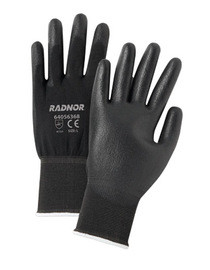The 12-panel urinalysis drug screen is considered a threshold question in getting your driver’s license restored. You need to overcome the hurdle of the drug screen to advance further in the process of demonstrating long-term sobriety and the network of support to maintain it. Our driver’s license restoration attorneys we can make sure you have all of the information necessary.
Sensorineural hearing losshappens most often from damage to the hair cells in the inner ear.Other causes include damage to the nerve for hearing, called the auditory nerve, or the brain. Every patient's hearing needs are unique. With our newest updates to Inspire X you have an even more personal, accurate way to fit your patients with Starkey's Prescriptive Fitting Package including a Feedback-Free Start, Multi-Channel Speech Optimization, Dedicated Music Compressor, Hearing Reality Pro, REM Target Match and Multiflex Tinnitus Pro. Normal-hearing people will have Xs and Os that don't go above 20 decibels. People with a mild hearing loss will have Xs and Os in the 20 to the 40-decibel range. A moderate loss is 40 to 60 decibels. Severe hearing loss falls in the 60 to 80-decibel range. A profound hearing loss is anything greater than 80 decibels. Driver License Hearing Request. Schedule a hearing about your Alabama Driver License.Does NOT apply to Hardship Driver License View All Online Services. Job Site Safety and Hearing Protection. HD Safety Earplugs (passive) and HD-15 Earplugs (active) are appropriate for most work environments. HD5 Safety Earphones are engineered for safe sound output and superior sound quality.
What Does the Drug Screen Check For?

The purpose of a 12-panel drug screen is to check for illicit substances. A typical 12 panel drug screen will test for active metabolites of the following 10 substances: amphetamines, barbiturates, benzodiazepines, cannabis, cocaine, methadone, methaqualone, opiates, phencyclidine, and propoxyphene. Typically, you will provide a urine sample at a clinic or drug testing site, and then the sample will be sent to a laboratory to have the test conducted. The drug screen is really about demonstrating by objective, certifiable scientific-proof that you have maintained abstinence from drugs.
The following table summarizes approximate detection times for the various substances. However, these are merely estimations and substances could still be detected for longer than the window indicates.
| Substance | Detection Window |
|---|---|
| Opiates | 1 to 3 days |
| Propoxyphene | 2 days |
| Amphetamines | 2 days |
| Methadone | 2 to 7 days |
| Benzodiazepines | 2 to 10 days |
| Barbiturates | 2 to 15 days |
| Phencyclidine | 8 days |
| Methaqualone | 10 days to 15 days |
| Cannabis | 1 week to 30 days |
Marijuana and Detection Times

As you can see from the table, detection times vary based on the substance. It is worth noting that cannabis, or marijuana has the longest detection times. THC is the active metabolite in marijuana and can be detected after more than one month. The period of detection actually depends on how long a person has used marijuana, the frequency of use, and the amount used each time. It is possible for THC to build up in the fat cells and be detectable for even periods as long as three months for heavy chronic users. THC is not water soluble so simply flushing a buildup of THC out by drinking water will not work, and diluting a sample can lead to a failed test for a diluted sample.
Alcohol and the Drug Screen
Technically, alcohol is not one of the substances that are tested for in the required drug screen. However, this does not mean that you should go out drinking the night before your drug screen. Do not forget, we must show a year of sobriety in order to win your license restoration. The hearing officers do hundreds of these cases and are professionals when it comes to detecting sincerity and a person’s character for truthfulness. So, even though the drug screen will not actually test for alcohol you must prove one year of continuous sobriety at the hearing. We will do everything we can to instruct you how to build the record and help you put together supporting documentation to prove a year of continuous sobriety by clear and convincing evidence.
How to Prepare for the 12 Panel Drug Screen
One good tip is to try to avoid going to the bathroom for one or two hours before the test, so that when it is time for you to collect a sample you will be ready to go. Obviously, you do not want to consume drugs or alcohol before the test, but you also do not want to consume excessive amounts of fluid. Samples are tested for two types of dilution: “Internal Dilution” and “External Dilution.” Internal dilution is the one we need to be most concerned about, because it is the only way you can fail to pass a drug screen even if you have not been consuming drugs or alcohol. Samples are tested for the concentration of metabolites including creatinine. If the urine sample comes back with creatinine levels between 2mg/dl and 20 mg/dl and a specific gravity of 1.003 or less than it will be recorded as a diluted sample even if no drugs are detected. Therefore, do not consume an excessive amount of fluid right before your drug screen or you could potentially fail your screen even if you are clean and sober.
The other type of dilution is external dilution, which means placing extra fluid directly in the sample to avoid detection. This would be detected by abnormal creatinine levels, and specific gravity test, but also likely it would fail to pass the temperature verification test necessary for a qualified sample.
Laboratory Drug Screens vs. Instant Drug Screen
Many drug screen clinics offer laboratory based 12 panel drug screens and instant 12 panel drug tests. You will want to use a clinic that offers a laboratory based the 12 panel drug screen. One of the reasons it is imperative that you get a laboratory screen is that the instant tests will not generate the report necessary for your hearing request or the substance abuse evaluation. The instant tests use color change strips that are dipped into the urine. Consequently, the test results do not create a full report. However, laboratory 12 panel drug screens are more money than an instant test, but the full report will be more convincing to the substance abuse evaluator and the hearing officer. Additionally, laboratory tests are considered more reliable and include information such as creatinine levels and the specific gravity of the urine. For the purposes of driver’s license restoration hearings, we recommend that you make sure to get a laboratory-based test completed.
Results
The results will be mailed to you in one to three weeks. Some laboratories have started to email results. If this is an option you can have results sent to you, your attorney, and also the substance abuse evaluator. If you have not set up your substance abuse evaluation yet, then simply bring the results of the 12 panel drug screen with you to the evaluation.
Do not hesitate to contact us with questions or to set up your free consultation today. Call us at 1-800-677-9795.
Learn how to read your audiogram and make sense of your hearing test results.

When you have your hearing professionally checked, the audiologist or specialistwill conduct aseries of tests designed to measure your hearing acuityand to determine the nature and extent of any hearing loss. Central among these is the classic pure tone test, to measure the quietest tone that you can hear at each frequency (pitch) across a range of testing frequencies.
The results of the pure tone testing are plotted on a chart called an audiogram. (Normally the audiogram is one section of a more comprehensive form, and the results of the other parts of the hearing exam are also recorded on this form.)
The Audiogram
Across the top of the audiogram is the range of frequencies tested, measured in hertz (Hz). Down the left of the chart is a sound level scale, in decibels (dB), with 0 dB near the top. On the chart is plotted your hearing threshold at each frequency tested. For the air conduction test (performed with headphones or earphones), the left ear is plotted using a blue X
XDrivers Hearing Labs
, and the right ear is plotted using a red O.For a person with excellent hearing, all of the data points would be near the top of the chart, close to 0 dB for every frequency tested. Wherever the markings dip below the top area of the chart, it indicates hearing loss.
Calculating Your Overall Threshold Hearing Level
All of the data shown on the chart is useful in assessing the character of the hearing loss and how best to treat it. But sometimes it is helpful to condense the information in the hearing test results down into a single number, to summarize the findings concisely. You can use the chart to calculate your overall threshold hearing level, which in turn can be used to classify the degree of hearing loss (mild, moderate, severe, etc).To calculate your overall threshold hearing level, first calculate the average dB level shown for all the Xs (left ear), then do the same for all the Os (right ear). For example, on the chart shown above, the average dB level for all the Os is:
The Xs are not shown on this chart, but you would follow the same procedure for those as well. So you have two numbers, an X average and an O average. Now take the lower of these two numbers; that is the overall threshold hearing level for your better ear. With this number, you can use this hearing loss chartto categorize the degree of hearing loss you have.
Test Hearing Regularly to See Changes over Time
An audiogram is a picture of your hearing profile as captured at a single point in time. If you have your hearing tested regularly, you can compare your hearing test results from year to year to see whether your hearing ability is worsening over time, and how fast it's happening.Drivers Hearing Lab Tests
If you are exposed to hazardous levels of noise,the US Centers for Disease Control recommends that you have your hearing professionally testedevery year. For an adult with healthy ears and no hazardous noise exposure, testing every three years is recommended. Of course, any time you notice a change in your hearing or have any other concerns about your hearing,it should also be checked out.
See also:
What tests are performed during a professional hearing test?
Using an audiogram to classify degrees of hearing loss
Leave this page (Hearing Test Results) and go → Back to Facts about Noise & Hearing
Leave this page (Hearing Test Results) and go → Back to Noise Help home page
